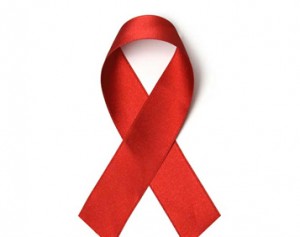HIV rate reduces in Upper East Region
 Dr Kofi Issah, the Upper East Regional Director of the Ghana Health Services (GHS), has said the region has recorded a constant decline in the Human Immune Virus (HIV) infections.
Dr Kofi Issah, the Upper East Regional Director of the Ghana Health Services (GHS), has said the region has recorded a constant decline in the Human Immune Virus (HIV) infections.
He said HIV prevalence rate for the region in the last three years has been below two percent with more than 90 per cent HIV testing among clients.
This was contained in a speech read for him at this year’s World AIDS Day (WAD) commemoration held in Navrongo under the theme: “90% – 90% – 90%: providing comprehensive integrated services for all towards an HIV-free generation.”
The Regional Director said the proportion of HIV positive pregnant women put on Antiretroviral Therapy (ART) increased from 35.1 in 2013 to 94.9 per cent in 2015 with a reduction in HIV vertical infection transmission among babies from 7.3 per cent in 2012 to 5.7 per cent in 2015.
He said the region recorded a total of 6,397 persons living with HIV, new HIV infections were 698, cumulative number of people living with HIV on ART were 3,886 and cumulative deaths among persons living with HIV was 669.
Dr Issah said “we are the only region in Ghana that has attained universal (100%) district ART clinic establishment coverage by increasing the number of ART clinics from 9 to 16 since 2014.”
He said the region is a torch-bearer of most health interventions in this country, and has instituted a tracking system at all Antenatal clinics to ensure that HIV positive women received the needed care.
He said every District in the region could now provide HIV care, treatment and support without referring any case to any other District.
“The number of facilities providing comprehensive HIV testing, counseling and Prevention of Mother-to-Child Transmission (PMTCT) services increased from 237 in 2014 to 255 for PMTCT and 260 for HIV Testing and Counseling (HTC).”
The Director said in spite of the positive consistent reduction in the disease at the regional level in the past three years, Navrongo recorded a consistent increase in the prevalence rate rising from 1.2 per cent in 2013, 1.6 per cent in 2014 to 1.8 per cent in 2015.
He said this year’s WAD observation in Navrongo was crucial and timely as it would offer opportunity to create awareness, provide HIV testing services and demand a concerted effort from all to curb the menace.
Dr Issah said the region was faced with limited midwives who play pivotal roles in comprehensive PMTCT and general HIV testing services and said it had the tendency to compromise the delivery of quality services since the limited midwives were overwhelmed with work, running both static and outreach services.
He said the Directorate was financially constrained in its quest to build staff capacity saying “the number of midwives and community health nurses trained on comprehensive HIV testing services is far below the target of at least two per facility.”
He said transportation to facilitate outreach services and antiretroviral delivery to lower level facilities was a major concern.
Dr Gifty Apiung Aninanya, Upper East Regional Technical Coordinator at the Ghana AIDS Commission, said this year’s WAD commemoration was unique as it marked the first year when Ghana and the global community signed onto the 90 -90 -90 target to be attained in 2020- towards ending AIDS in 2030.
She said the day was set aside to renew HIV and AIDS awareness, support those living with the disease and to remember family members and friends who had died from the disease.
Source: GNA
